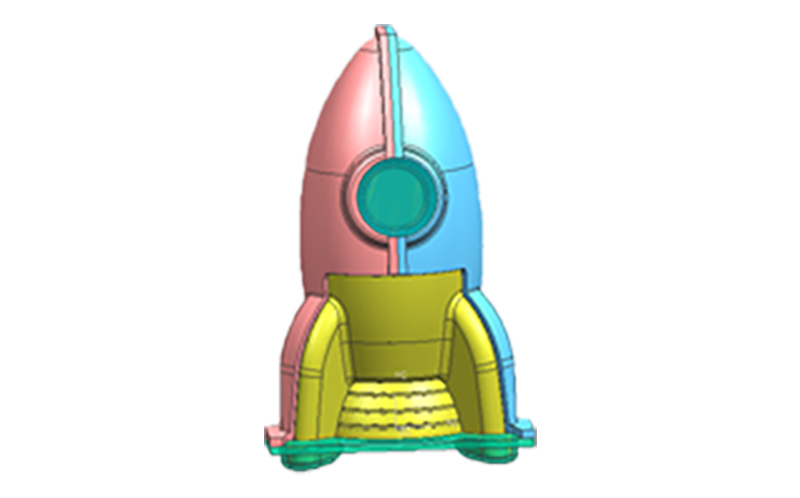General Design Guidelines for Corner Radii in Rotomolded Products
 Mar 21,2024
Mar 21,2024

General Design Guidelines for Corner Radii in Rotomolded Products
In rotational molding process, the design of corner radii is crucial for achieving high-quality products with enhanced structural integrity, ease of demolding, and appealing aesthetics. Properly designing corner radii can significantly improve a product's performance and marketability. This article will provide useful design guidelines for incorporating corner radii into rotomolded products effectively.

1. Select the Right Corner Radius
The corner radius is a critical factor in the design of rotomolded products. It should be carefully selected to ensure smooth material flow and even adhesion to the mold walls. The radius should be balanced with the overall product dimensions, wall thickness, and the desired material flow. Larger radii may be necessary for thicker walls or more complex geometries to ensure smooth material flow and uniform wall thickness.
2. Consider the Product's Application
The intended use of the product should guide the design of the corner radii. For example, products that will experience high mechanical stresses or impacts may require larger, more robust corner radii to enhance their structural integrity.
3. Maintain Uniform Wall Thickness
Corner radii should be designed to maintain uniform wall thickness throughout the product. The radius should be selected to avoid material buildup or thinning in the corners, which can compromise the product's structural performance.
4. Aesthetic Considerations
Corner radii contribute to the overall aesthetics of rotational molded products. The size and shape of the radius can be tailored to achieve the desired visual appeal and can also help to mask any potential defects or irregularities that may occur during the molding process.
5. Mold Design and Construction
The design and construction of the mold itself should facilitate the creation of the desired corner radii. Split molds, for example, can make it easier to achieve smooth transitions and minimize the risk of material buildup. The mold material should also be selected based on its ability to maintain the desired corner radius during the molding process.
6. Transition Areas
Transition areas, where the wall thickness or shape changes abruptly, can pose challenges for demolding. In these areas, fillets or gradual transitions between different wall sections should be designed to promote uniform material flow and facilitate easier demolding.
7. Material Considerations:
The choice of plastic material and its properties should be considered when designing corner radii. Some materials may require larger or fewer corner radii to achieve the desired structural performance. It is essential to select a material that can withstand the expected loading conditions and maintain the structural integrity of the product. The recommended inside and outside corner radii for the commonly molded materials are listed in sheet
|
Plastic Material |
Inside Radii |
Outside Radii |
||||
|
Better (mm) |
Normal (mm) |
Min. (mm) |
Better (mm) |
Normal (mm) |
Min. (mm) |
|
|
Polyethylene |
12.6 |
6.4 |
3.2 |
6.4 |
3.2 |
1.5 |
|
PVC |
9.5 |
6.4 |
3.2 |
6.4 |
3.2 |
2.0 |
|
Nylon |
19.1 |
9.5 |
4.8 |
12.6 |
9.5 |
4.7 |
|
Polycarbonate |
12.6 |
9.5 |
3.2 |
19.0 |
9.5 |
6.4 |
8. Prototyping and Testing:
Before finalizing the mold design, it is beneficial to create a prototype and test the demolding process. This can help identify any areas where the corner radii may need to be adjusted to improve the ease of removal and overall product quality.
With years of rich experience in rotational molding, Light Venus offers value-added services that include design assistance. To learn more about us and our custom rotational molding capabilities, contact us by using the online form or send email to roto@lightvenus.com.
 Tel: 0086-13632687993
Tel: 0086-13632687993  Email: roto@lightvenus.com
Email: roto@lightvenus.com

 Home
Home Reinforcing Ribs Design Guidelines for Rotomolded Products
Reinforcing Ribs Design Guidelines for Rotomolded Products  You May Also Like
You May Also Like



 Tel
Tel
 Email
Email
 Address
Address








